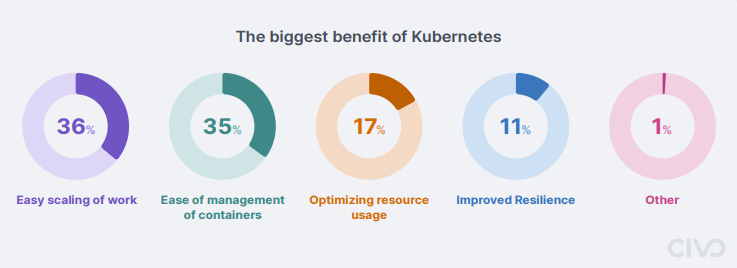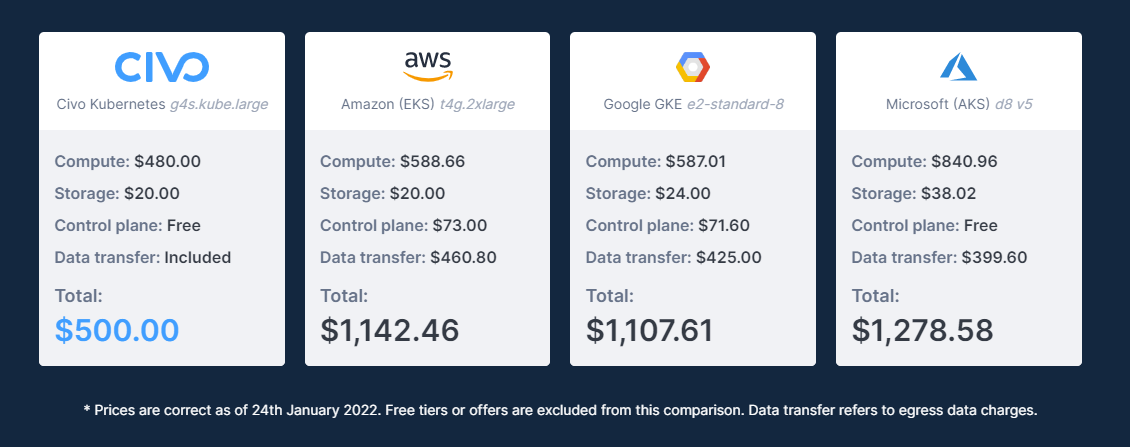Looking back on the last 18 months, it is abundantly clear that one piece of technology found its moment more than any other: cloud. Essential to modern computing, cloud provides the capacity for businesses to run workloads with the flexibility and scale many firms would struggle to achieve with on-premise infrastructure. According to Flexera’s 2021 State of the Cloud Report, 90% of firms slightly or significantly increased their cloud usage due to the pandemic.
As we enter a truly cloud-native world, businesses are desperate to use cloud as a platform for unprecedented technological innovation. This intends to scale up their capabilities in areas such as artificial intelligence to tap into evolving customer preferences and deliver tangible value to the business.
One key area for cloud-native proficiency has been containers. In essence, containers offer firms a flexible way to package up software code and quickly get started with testing, deploying, and running the applications that keep the business going – and growing – every day. Developers are particularly drawn to containerization by its portability, enabling them to move workloads easily between a range of on-premise and cloud environments.

Source: The Kubernetes state of play report 2022
Using the cloud in the right way is critical for developer success. To support containerized workloads, many in the industry rely on Kubernetes, the container orchestration platform, to manage and optimize the running of containers and ultimately help firms to scale. Research from Civo found 90% of enterprises using Kubernetes are running it on the cloud.
Although cloud technology has seen widespread adoption, the high costs associated with scaling up cloud infrastructure have limited growth and become a concern for enterprises.
The cost of cloud
There is no doubt that we are currently experiencing an unprecedented level of investment in cloud technology. According to Gartner, worldwide end-user spending on public cloud services was forecasted to grow 23.1% in 2021 to $332.3 billion, up from $270 billion in 2020.
Many companies are facing a significant issue: the inability to optimize their spending on cloud services. Those in the industry have pointed to a troubling rise in ‘cloud sprawl’ as firms rush to expand their presence in the cloud and embrace new computing resources and tooling – but in the process, leave many workloads and assets underutilized. Research from Densify suggests firms may be overspending by as much as 42% on cloud.
A core part of this excessive spending is the nature of billing from many large cloud providers. Civo recently surveyed 1,000 cloud developers; an extraordinary 47% reported issues regarding how much cloud providers charge for containers each month.

Source: The cost of cloud report 2022
These issues can quickly spiral, particularly if firms fail to optimize Kubernetes workloads running in the cloud. In a recent community survey from the Cloud Native Computing Foundation, 68% of respondents reported that Kubernetes costs had increased in the last 12 months. Out of those for whom costs had risen, half saw it jump more than 20%.
Many firms struggle to keep up with data management costs in the cloud. Running any workload in a public cloud comes with various costs that can be difficult to manage, from service costs to egress and ingress charges for data moving in and out of the cloud. 47% of developers reported to Civo they have even faced a surprise bill from a cloud hosting provider.
Cloud cost predictability is key
Excessive spending on infrastructure can quickly turn the launch of new technology into a drain on resources, damaging trust in the business and even putting future projects in jeopardy. It is essential for IT teams to be proactive in addressing this problem. Reducing costs is integral to any successful business and needs to be seen as a core function of any IT leader’s role.
As an industry, we need to reflect on why we have accepted a situation where billing is so unpredictable in the cloud. This situation can be particularly terrifying for small business owners, who rely on rigorous planning of all expenditures to keep the business afloat – any significant rises in costs could be critical.
Imagine an alternative scenario for business expenditure. Would we accept a situation where taxes shot up with little warning month-by-month? Or a marketing vendor whose rate suddenly added extra charges the longer you worked with them?
A more transparent future
Given the circumstances, it is unsurprising that many industry leaders have grown concerned with the options presented to developers by major cloud providers like AWS, Azure, and Google Cloud. Cloudflare CEO Matthew Prince was particularly vocal recently, declaring that "AWS’s bandwidth pricing is bonkers.”

Source: The cost of cloud report 2022
Prince's statement highlights the complex challenges that many companies face when utilizing the cloud. Many hyperscale providers offer a minimal charge for data moving into the cloud (ingress) but will charge huge prices for firms to move data out (egress). Prince makes the point that, at a time when bandwidth costs have dropped by 93% in the last decade, AWS is particularly guilty of not lowering their egress charges in line – allowing them to make significant profits at their customer’s expense.
Many users point to this as part of a broader pattern of a lack of transparency on pricing from hyperscale providers. Indeed, 15% of cloud developers told Civo that opaque pricing when using hyperscale providers was their primary frustration with containers. Due to the high cost of transferring data out of a cloud provider, many companies simply accept that they will have to remain with their original provider.
For everyone to benefit from the cloud-native world, we need a better way forward. This vendor lock-in is not conducive to the realities of modern IT infrastructure; technologies like containers are built on portability and allow developers to seamlessly move between different cloud and on-premises environments.
It is certainly important for businesses to plan and strategize for how they will best utilize the cloud to match their needs. Gartner estimates that less than one-third of firms have a documented cloud strategy. But to facilitate this process, we must see concerted action from the industry to add more transparency and predictability to costs in the cloud for businesses.
Too many companies only work with the Big Three without fully understanding why, leading to overspending and underutilization of services. The way forward must be putting the developer first, clearing away the fog to offer a demystified picture of pricing and chargeable services upfront. In addition, being able to predict your next monthly bill will help business owners find a sustainable place for cloud in their technology strategy and capitalize on all the innovative possibilities on offer.